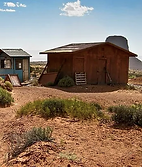PROJECTS
The Observatory reiterates its mission to help transform this wind of change into a positive effect for defining a more inclusive and fairer society able to preserve democracy, freedom, human rights, to fight poverty and discrimination, to leave no one behind, following the UN 2030 Agenda.
OCCAM has developed new digital strategies to help marginalized communities.
ICT VILLAGE PROJECT
The ICT Village model follows a flexible and easily replicable process of intervention in many areas of the world, providing various services designed to promote endogenous and sustainable development. The first ICT village project was carried out in 1999 in Honduras, hit by the devastating hurricane Mitch. Thanks to the use of solar panels, the supply of electricity was guaranteed. A connection up to 108 mb/sec – a real record for the time – for more than 30,000 people enabled the creation of the first e-learning and telemedicine services, allowing the population to exploit these new technologies and to connect to the rest of the world through e-commerce and e-government initiatives.
.png)


OUR ICT VILLAGES
EWA-BELT PROJECT
It stems from the World Food Security e-Center and falls under the European Horizon2020 Programme. EWA-BELT aims at defining sustainable intensification agriculture models in 25 rural villages across Burkina Faso, Ethiopia, Ghana, Kenya, Tanzania and Sierra Leone. Find out more on the EWA-BELT website.
A_Barnaud-8_JPG.jpg)

EMEDMED PROJECT
eMedMed is a project born in the context of the Union for the Mediterranean. It aims to bring an innovative and efficient diffusion of the health service in Tunisia, Morocco, Libya, and Egypt through telemedicine. It is the result of the experimentation of over 15 years of applications in various ICT Villages in the field of maternal care, emergencies, cardiology, and traumatology.
The goal is to improve health conditions in Southern Mediterranean countries through the participation of a network of clinical centres and European experts connected with local structures through a specific platform with ICT Solutions and innovative scientific m-devices. The system integrates the resources of hospitals and service centres in the area and the data collected on the field (diagnostic imaging, medical records, patient records, consultations, training etc.) through the network, optimizing the home care of the patient, reducing costs and improving the use of resources.


THE 3D ROBOTIC BUILDING SYSTEM
The 3D Robotic Building System is an innovative technology project designed by the OCCAM ARCHGROUP (Pierpaolo Saporito, Cesare Casati, Ivan Shumkov, Joseph di Pasquale) to provide large scale and fast housing for emarginated people and slums inhabitants. Due to the low cost and hight capacity of inclusion in terms of easy auto-constructions facilities, the project aims at supporting families in disadvantaged areas.
The project, selected at the “Resilient Home” Challenge 2019, promoted by World Bank and UN Habitat, uses this new 3D Robotic Technology to create different housing typologies for slums recovery and emergency, able to realize thousand dwellings a day at minimum cost.


_edited.jpg)



